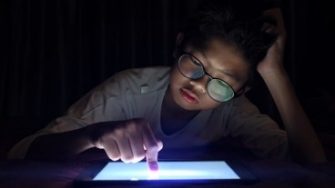
Being myopic, more commonly known as short-sighted, increases the risk of developing a number of sight-threatening conditions such as myopic macular degeneration (MMD), retinal detachment (RD) and open angle glaucoma (OAG). With a projected one in two of all people on earth becoming myopic within 30 years, healthcare professionals across the globe are racing to find the drive behind this condition; and hopefully a solution to it.
Recently, researchers at SOVS, BHVI and SEDPTC (Shanghai Eye Disease Prevention and Treatment Center), through a two-year trial, identified late sleepers as a susceptible group to both myopia onset and progression, which suggests a complex relationship between circadian rhythm, indoor environment, habitual indoor activities and myopia development and progression. These findings offered new insights into future myopia aetiology studies as well as decision-making of myopia prevention strategies. Find out more about this study, read the latest paper at https://doi.org/10.1038/s41598-020-74348-7
